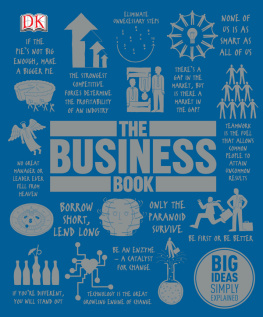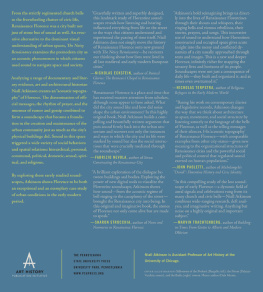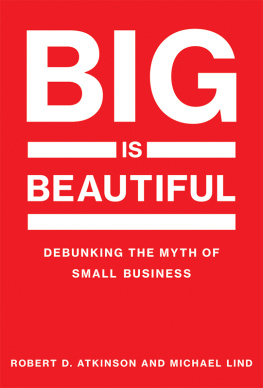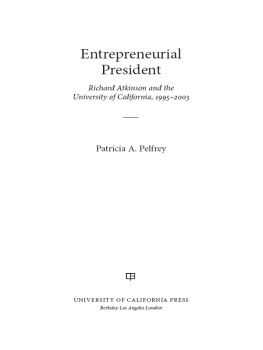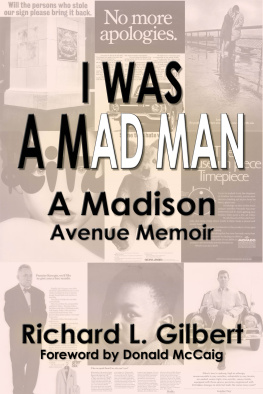Atkinson - DK, Richard Gilbert: The Business Book
Here you can read online Atkinson - DK, Richard Gilbert: The Business Book full text of the book (entire story) in english for free. Download pdf and epub, get meaning, cover and reviews about this ebook. City: New York, year: 2014, publisher: DK Publishing;Dorling Kindersley, genre: Business. Description of the work, (preface) as well as reviews are available. Best literature library LitArk.com created for fans of good reading and offers a wide selection of genres:
Romance novel
Science fiction
Adventure
Detective
Science
History
Home and family
Prose
Art
Politics
Computer
Non-fiction
Religion
Business
Children
Humor
Choose a favorite category and find really read worthwhile books. Enjoy immersion in the world of imagination, feel the emotions of the characters or learn something new for yourself, make an fascinating discovery.
DK, Richard Gilbert: The Business Book: summary, description and annotation
We offer to read an annotation, description, summary or preface (depends on what the author of the book "DK, Richard Gilbert: The Business Book" wrote himself). If you haven't found the necessary information about the book — write in the comments, we will try to find it.
DK, Richard Gilbert: The Business Book — read online for free the complete book (whole text) full work
Below is the text of the book, divided by pages. System saving the place of the last page read, allows you to conveniently read the book "DK, Richard Gilbert: The Business Book" online for free, without having to search again every time where you left off. Put a bookmark, and you can go to the page where you finished reading at any time.
Font size:
Interval:
Bookmark:



From the time that goods and services began to be traded in early civilizations, people have been thinking about business. The emergence of specialized producers and the use of money as a means of exchange were methods by which individuals and societies could, in modern terms, gain a business edge. The ancient Egyptians, the Mayans, the Greeks, and the Romans all knew that wealth creation through the mechanism of commerce was fundamental to the acquisition of power, and formed the base on which civilization could prosper.
The lessons of the early traders resonate even today. Specialism revealed the benefits of economies of scalethat production costs fall as more items are produced. Money gave rise to the concept of value addedselling an item for more than it cost to produce. Even when barter was the norm, producers still knew it was advantageous to lower costs and raise the value of goods. Todays companies may use different technologies and trade on a global scale, but the essence of business has changed little in millennia.
"The art of administration is as old as the human race."
Edward D. Jones
US investment banker (18931982)
However, the study of business as an activity in its own right emerged relatively recently. The terms manager and management did not appear in the English language until the late 16th century. In his 1977 text The Visible Hand, Dr. Alfred Chandler divided business history into two periods: pre-1850 and post-1850. Before 1850 local, family-owned firms dominated the business environment. With commerce operating on a relatively small scale, little thought was given to the wider disciplines of business.
The growth of the railroads in the mid-1800s, followed by the Industrial Revolution, enabled businesses to grow beyond the immediate gaze of friends or family, and outside the immediate locale. To prosper in this newand increasingly internationalenvironment businesses needed different, and more rigorous, processes and structures. The geographic scope and ever-growing size of these evolving businesses required new levels of coordination and communicationin short, businesses needed management.
The initial focus of the new breed of manager was on production. As manufacturing moved from individual craftsmen to machinery, and as ever-greater scale was required, theorists such as Henri Fayol examined ever-more-efficient ways of operating. The theories of Scientific Management, chiefly formulated by Frederick Taylor, suggested that there was one best way to perform a task. Businesses were organized by precise routines, and the role of the worker was simply to supervise and feed machinery, as though they were part of it. With the advent of production lines in the early 1900s, business was characterized by standardization and mass production.
While Henry Fords Model T car is seen as a major accomplishment of industrialization, Ford also remarked why is it every time I ask for a pair of hands, they come with a brain attached? Output may have increased, but so too did conflict between management and staff. Working conditions were poor and businesses ignored the sociological context of workproductivity mattered more than people.

In the 1920s a new influence on business thinking emergedthe Human Relations Movement of behavioral studies. Through the work of psychologists Elton Mayo and Abraham Maslow, businesses began to recognize the value of human relations. Workers were no longer seen as simply cogs in the machine, but as individuals with unique needs. Managers still focused on efficiency, but realized that workers were more productive when their social and emotional needs were taken care of. For the first time, job design, workplace environments, teamwork, remuneration, and nonfinancial benefits were all considered important to staff motivation.
In the period following World War II, business practice shifted again. Wartime innovation had yielded significant technological advances that could be applied to commerce. Managers began to utilize quantitative analysis, and were able to make use of computers to help solve operational problems. Human relations were not forgotten, but in management thinking, measurability returned to the fore.
The postwar period saw the growth of multinationals and conglomeratesbusinesses with multiple and diverse interests across the globe. The war had made the world seem smaller, and had paved the way for the global brand. These newly emerging global brands grew as a result of a media revolutiontelevision, magazines, and newspapers gave businesses the means to reach a mass audience. Businesses had always used advertising to inform customers about products and to persuade them to buy, but mass media provided the platform for a new, and much broader, fieldmarketing. In the 1940s US advertising executive Rosser Reeves promoted the value of a Unique Selling Proposition. By the 1960s, marketing methods had shifted from simply telling customers about products to listening to what customers wanted, and adapting products and services to suit that.
Font size:
Interval:
Bookmark:
Similar books «DK, Richard Gilbert: The Business Book»
Look at similar books to DK, Richard Gilbert: The Business Book. We have selected literature similar in name and meaning in the hope of providing readers with more options to find new, interesting, not yet read works.
Discussion, reviews of the book DK, Richard Gilbert: The Business Book and just readers' own opinions. Leave your comments, write what you think about the work, its meaning or the main characters. Specify what exactly you liked and what you didn't like, and why you think so.

